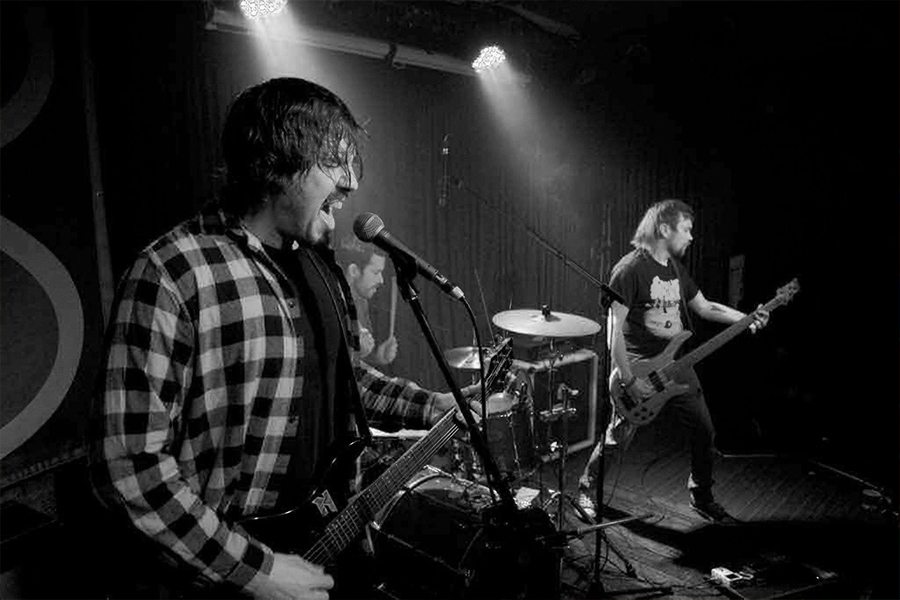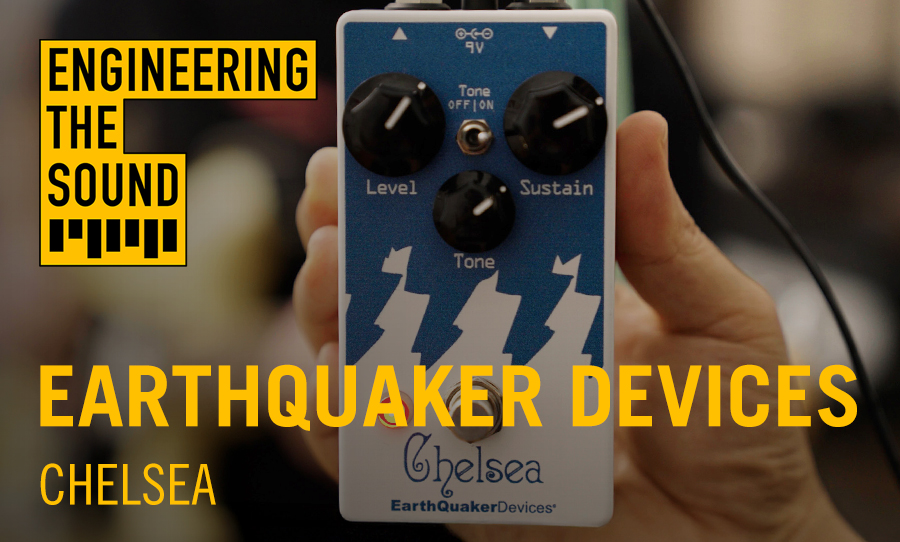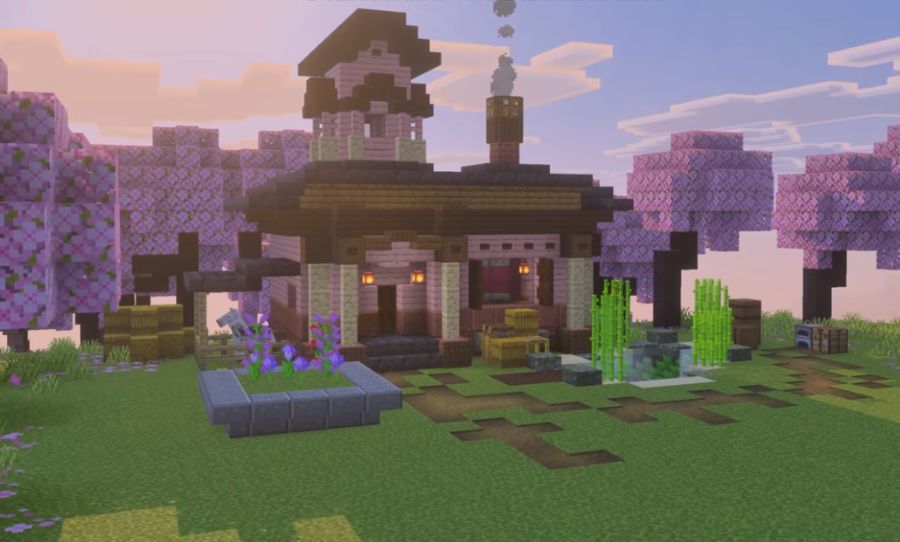With vicious riffs, apocalyptic drums and throat-shredding vocals, Palmerslum have a furious sound. Taking cues from Nirvana, the Sex Pistols and Aussie punk heroes like Cosmic Psychos and Radio Birdman, their ability to merge elements of grunge, punk and pub rock is seamless.
Obviously, guitars are central to the Palmerslum sound, so we had a chat to guitarist/vocalist, Chris Cleveland, about what kind of gear he is using, the importance of stripping it back, and why a broken piece of gear can be a glorious thing.

The importance of stripping it back, the magic of broken pedals, and Tekken vocals: talking gear with Melbourne grunge trio, Palmerslum.
HAPPY: Can you run us through what’s on your board[s] at the moment?
PALMERSLUM: So I have a couple of my go to pedals: a T-Rex Dr Swamp, which is a twin distortion, an Electro Harmonix Small Clone and an Earthquaker Devices Rainbow Machine. Over the years I have tried so many different combos of pedals but these seem to be the most versatile – but not in the way you would think…
HAPPY: What kind of guitars are you on?
PALMERSLUM: I have some pretty nice guitars that I only really ever use in recording, Greco s900 (the prototype for the GO3) a Greco GO Speedway, a Conora neck thru Strat- these are all late 70s FujiGen Gakki models. Then there are the Washburns.
HAPPY: They’re on the cheaper side right? Do you have a couple of go-to tricks for working on them?
PALMERSLUM: When I was 15 I got my first semi decent guitar, it was a Washburn Maverick HSS, it was made in 2001 in Korea, It was $400 brand new. Let’s face it, it was a beginners guitar, but I found from the get go that there was something special about it – the action was really low and the scale is short on the neck and it seemed perfect for playing choppy drop D riffs.
Having a short scale also made it easy to do huge bends and combine that with that scooped bottom heavy Marshall sound it was perfect for me to start playing with the tones. As I started getting deeper into music my ears started wanting more and after trying many different guitars and not really liking anything I decided to upgrade. The trick is to get gain from the humbucker, but the right sort of gain, too much top end on a guitar that is naturally bright sounding will cut off heads and to much bottom end on a guitar that sounds naturally fat will make everything muddy.
Of course I had no idea about any of that when I got the guitar upgraded but after taking it to the Music Swop Shop in Collingwood and getting a second hand high gain Dimarzio pickup (I think this pickup was based of a P90 but it was done in 2009 and I cant remember what it is!) installed, and getting a full fret redress and setup, it seemed to transform the guitar completely.
The main thing I noticed was that pop squeals became effortless and things were much clearer, but it also changed my songwriting. I started writing faster music. I recently found another Maverick from the same factory that was built 4 weeks after my original one was – it had hardly been touched and looked brand new. After buying it I immediately brought it to Clinghan guitar tone where I got a full fret dress, and after spending 5 hours on the Seymour Duncan website, I decided to go with the Nazgul bridge pickup and it has been great knowing that I have a near-identical backup!
HAPPY: What was the first pedal you bought?
PALMERSLUM: Ummm, that’s a long time ago…it was a BOSS Metal Zone – completely underrated pedal. The filthiness of it is its biggest asset. I found that I initially hated the fizziness of it and replaced it with a Boss OD1, but it’s a pretty rad pedal if used in the right application.
HAPPY: Do you use any vocal effects?
PALMERSLUM: I find the easiest way to let the sound engineer know what I want is to tell them that I want a wet Tekken 2 sound, this is almost always followed by me saying in a loud announcer voice “Roooound 1, Lee versus Jun, FIGHT!”…they usually get it straight away.
HAPPY: What’s your favourite pedal under 100 bucks and why?
PALMERSLUM: For about $40 you can get these Behringer distortion pedals, they are fun to try and break if you are having a really intense jam. You can kick them, spill beer on them, heel the knobs (smash your heel into the knobs instead of the pedal) and basically fuck them up as much as you want. When they start dying is when it gets interesting because you never know what you will get. Just make sure you hit record and freedom will take over.
HAPPY: What do you have on your board at the moment that really shapes your sound? Say, on the Bloodhounds EP.
PALMERSLUM: Because I don’t use that many pedals these days, the biggest factor that shapes the sound firstly comes from the way I play, secondly from the guitar, and thirdly from the amp, the pedals are last on the list. If there had to be one pedal it would be the Small Clone – it features on every song except Mcadam.
HAPPY: How do you approach your signal chain/routing?
PALMERSLUM: I always try to make things as clean as possible and depending on what amp I use I’ll try to go through the FX loop, I try to avoid using pedals. I can get away with it because I use amps that have MIDI preset controls and I set my controller to switch the amp channels rather than using pedals for distortion. I have a ENGIL Invader 150 which has 4 channels – lots of options for shaping tone and because MIDI controls the FX loops in each one of those channels, you can go in super clean and still have lots of options. The other set up is the Marshall JVM 205C, also MIDI controlled, but there is too much lag between switching and I have had some issues using MIDI, so that rig has a more traditional pedal set up. In terms of signal flow I like to put my distortion first, modulation second and delay last. This way makes the delay retain all the FX on the tails and you can make sounds transition better.
HAPPY: Do you switch pedals in and out often?
PALMERSLUM: Yeah, I have a ton of pedals but I try not to use them all at once. I find that I like to change things up so that I keep it entertaining for myself. I find this approach helps develop new songs with different sounds, and you also get to really know your gear because you focus on one thing at a time.
HAPPY: Do you think grunge or punk bands can pull flourish cheaper equipment? Would you ever buy up?
PALMERSLUM: It really depends on your attitude towards sound, I visualise a sound in my mind first and it then becomes a challenge to hunt it down in reality. If you can pull that off with cheap gear then you are never going to have a problem, obviously there are boundaries to how far you can push gear. If you just listen, adjust and experiment, rather than expecting a great sound because your gear is expensive then you will learn how to get the best out of what you have in front of you. There are so many variables with tone especially when it comes to recording there is no way of telling what sounds good unless you try everything. Don’t listen reviews. Listen to your amp.
HAPPY: Do you have any particular ethos when it comes to using guitar pedals?
PALMERSLUM: There was a point in my live where they were the only thing that mattered, I had a Pedal train Grande (the big fuck-off one) with:
EHX Polychorus, Eventide Pitch Factor, Strymon Timeline, Diamond Memory Lane, Diamond vibrato, Earthquaker Devices Bit Comander, T-rex Dr swamp, Earthquaker Devices Rainbow Machine, Wampler spring reverb, Pigtronix Mothership, MXR 10 band EQ, Empress Compressor, all hooked up to a Rocktron Loop 8 rack being controlled by a MIDI foot controller that would also send preset change to the Pitch Factor, the Timeline and finally to the ENGEL Invader that was running a Deizil rear loaded ceramic hemp cone 2 x 12…
Then I put it all away. I plugged in my clapped out Marshall Valvestate combo and put a shitty Boss OD1 in the chain and what I found was my song writing instantly improved. I found that I wasn’t relying on my gear sounding good so my playing improved, I wasn’t spending time setting up or looking for that one dodgy patch lead that was buried in my board, I found that the rehearsals were flowing and we weren’t constantly stopping to adjust levels. I also didn’t think about what FX I wanted and this really changed my approach to everything. It was a lot easier to balance out the sound of the whole band and when it became time to record Bloodhounds, the FX that I used seemed to have more impact on the music. It made me view my gear more as a tool than a toy.
HAPPY: If you had to cull your board down to two pedals, what would they be?
PALMERSLUM: A tuner and the Rainbow Machine. People say that pedal is a one trick pony but there is a lot that it has to offer; you can get an amazing chorus sound with those pedals if you know what you’re doing.
HAPPY: Do you have any pedal heroes or other artist who you feel really nail a sound through their rig?
PALMERSLUM: I always loved Dimebag Darrel’s sound. He pulled it off way too well. I think it’s mainly the way he played – there is an element of precision and clarity and whenever I see live footage of Pantera I am always amazed by how clean he plays given the fact he is moving around like a maniac.
Check out Bloodhounds, the new EP from Palmerslum, on Bandcamp.



